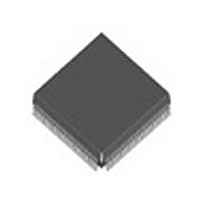BCM5208KPF Broadcom, BCM5208KPF Datasheet - Page 21

BCM5208KPF
Manufacturer Part Number
BCM5208KPF
Description
Manufacturer
Broadcom
Datasheet
1.BCM5208KPF.pdf
(62 pages)
Specifications of BCM5208KPF
Number Of Receivers
4
Data Rate
10/100Mbps
Operating Temperature Classification
Commercial
Operating Supply Voltage (min)
3.14V
Mounting
Surface Mount
Operating Temperature (max)
70C
Operating Temperature (min)
0C
Lead Free Status / RoHS Status
Not Compliant
Available stocks
Company
Part Number
Manufacturer
Quantity
Price
Company:
Part Number:
BCM5208KPF
Manufacturer:
ON
Quantity:
201
Company:
Part Number:
BCM5208KPF
Manufacturer:
BCM
Quantity:
846
Part Number:
BCM5208KPF
Manufacturer:
BROADCOM
Quantity:
20 000
n BCM5208
November 3, 1999
SECTION 4: OPERATIONAL DESCRIPTION
RESETTING THE BCM5208
There are two ways to reset each transceiver in the BCM5208. A hardware reset pin has been provided which resets all
internal nodes inside the chip to a known state. The reset pulse must be asserted for at least 400 ns. Hardware reset should
always be applied to a BCM5208 after power-up.
Each transceiver in the BCM5208 also has an individual software reset capability. To perform software reset, a “1” must be
written to bit 15 of the transceiver’s MII Control Register (see MII Register Definitions). This bit is self-clearing, meaning
that a second write operation is not necessary to end the reset. There is no effect if a “0” is written to the MII Control Register
reset bit.
ISOLATE MODE
Each transceiver in the BCM5208 may be isolated from the MII. When a transceiver is put into isolate mode, all MII inputs
(TXD[3:0], TXEN, and TXER) are ignored, and all MII outputs (TXC, COL, CRS, RXC, RXDV, RXER, and RXD[3:0]) are
set at high impedance. Only the MII management pins (MDC, MDIO) operate normally. Upon resetting the chip, the isolate
mode is off. Writing a “1” to bit 10 of the MII Control Register puts the transceiver into isolate mode. Writing a “0” to the
same bit removes it from isolate mode.
LOOPBACK MODE
The loopback mode allows in-circuit testing of the BCM5208 chip. All packets sent in through the TXD pins are looped-back
internally to the RXD pins, and are not sent out to the cable. Incoming packets on the cable are ignored. Because of this,
the COL pin will normally not be activated during loopback mode. In order to test that the COL pin is actually working, the
BCM5208 may be placed into collision test mode. This mode is enabled by writing a “1” to bit 7 of the MII Control Register.
Asserting TXEN will cause the COL output to go high, and deasserting TXEN will cause the COL output to go low.
The loopback mode may be entered by writing a “1” to bit 14 of the MII Control Register. In order to resume normal
operation, bit 14 of the MII Control Register must be “0”.
Several function bypass modes are also supported which can provide a number of different combinations of feedback paths
during loopback testing. These bypass modes include: bypass scrambler, bypass MLT3 encoder and bypass 4B5B
encoder.
FULL-DUPLEX MODE
The BCM5208 supports full-duplex operation. While in full-duplex mode, a transceiver may simultaneously transmit and
receive packets on the cable. The COL signal is never activated while in full-duplex mode. By default, each transceiver in
the BCM5208 powers up in half-duplex mode.
When Auto-Negotiation is disabled, full-duplex operation can be enabled either by a pin (FDXEN) or by an MII register bit
(Register “0”’ bit 8).
When Auto-Negotiation is enabled in DTE mode, full-duplex capability is advertised by default but can be overridden by a
write to the Auto-Negotiation Advertisement Register (04h). In repeater mode full-duplex capability can never be
advertised.
REPEATER MODE
The BCM5208 will operate in repeater mode when the repeater mode select pin is pulled high. In repeater mode, carrier
sense will not be asserted for transmit events. Full-duplex mode will be disabled. The collision outputs are replaced by MII
port enable inputs (RXEN {1:4}), allowing the MII ports from multiple BCM5208’s to be bussed. When RXEN is low,
RXD[3:0], RXDV, RXER and RXC outputs will be tri-stated. CRS is always driven.
B r o a d c o m C o r p o r a t i o n
Document 5208-DS03-R¥¥¥¥¥
Page 13












